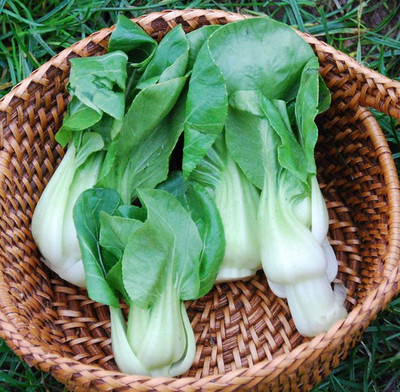Atlus Extra Dwarf Pak Choi Seed(50 per packet)
Quick Overview
Product Price Comparison
Green pak choi How to Sow and PlantGreen pak choi Cabbage may be direct sown or started indoors early for fall and spring crops, or purchased as transplants for a fall crop.Green pak choi Sowing Seed Indoors:Sow seeds from spring to early summer in the north; in the south and other frost-free areas, sow from fall to spring.Start seeds indoors about 8 weeks before outdoor planting.Sow seeds ┬╝ inches deep in seed-starting formulaKeep the soil moist at 70 degrees FSeedlings emerge in 10-21 daysAs soon as seedlings emerge, provide plenty of light on a sunny windowsill or grow seedlings 3-4 inches beneath fluorescent plant lights turned on 16 hours per day, off for 8 hours at night. Raise the lights as the plants grow taller. Incandescent bulbs will not work for this process because they will get too hot. Most plants require a dark period to grow, do not leave lights on for 24 hours.Seedlings do not need much fertilizer, feed when they are 3-4 weeks old using a starter solution (half strength of a complete indoor houseplant food) according to manufacturerŌĆÖs directions.If you are growing in small cells, you may need to transplant the seedlings to 3 or 4 inch pots when seedlings have at least 3 pairs of leaves before transplanting to the garden so they have enough room to develop strong roots.Before planting in the garden, seedling plants need to be ŌĆ£hardened offŌĆØ. Accustom young plants to outdoor conditions by moving them to a sheltered place outside for a week. Be sure to protect them from wind and hot sun at first. If frost threatens at night, cover or bring containers indoors, then take them out again in the morning. This hardening off process toughens the plantŌĆÖs cell structure and reduces transplant shock and scalding.Green pak choi Sowing Directly in the Garden:Sow seeds from spring to early summer in the north; in the south and other frost-free areas, sow from fall to spring.Sow in average soil in a sunny location in early spring or in midsummer for a fall crop.In rows 2 feet apart, sow seeds thinly and cover with ┬╝ inch of fine soil.Keep evenly moist. Water gently.Seedlings emerge in 10-21 days.Thin to stand about 24 inches apart when seedlings are 2-3 inches high.Planting from Transplants in Fall:Select a location in full sun with good rich moist organic soil.Prepare the bed by turning the soil under to a depth of 8 inches. Level with a rake to remove clumps of grass and stones.Dig a hole for each plant large enough to amply accommodate the root ball. Space plants 2 feet apart in rows 3 feet apart.Carefully remove the plant from its pot and gently loosen the root ball with your hands to encourage good root development.Place the top of the root ball even with the level of the surrounding soil. Fill with soil to the top of the root ball. Press soil down firmly with your hand.Use the plant tag as a location marker.Thoroughly water and apply a light mulch layer on top of the soil (1-2 inches) to conserve water and reduce weeds.How to GrowKeep weeds under control during the growing season. Weeds compete with plants for water, space and nutrients, so control them by either cultivating often or use a mulch to prevent their seeds from germinating. Avoid disturbing the soil around the plants when weeding.Keep plants well watered during dry periods to promote rapid, uninterrupted growth.Monitor for pests and diseases. Check with your local Cooperative Extension Service for pest controls recommended for your area. While small, floating row covers will help to keep pests at bay.Harvest and Preserving TipsHarvest heads when they become firm.Cut stems at soil level and remove outer leaves. Smaller heads will develop at the base once the central head is harvested.Eat the heads raw or cooked.Store fall-harvested cabbage for several months if you store them at 40 degrees F in high humidity.


